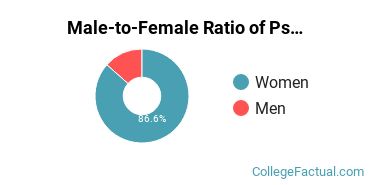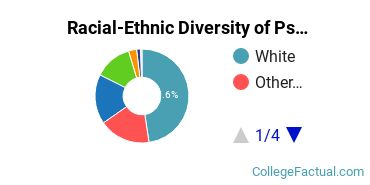 by our College Data Analytics Team
by our College Data Analytics TeamPsychology is a program of study at Capella University. The school offers a master’s degree in the area. Here, you’ll find out more about the major master’s degree program in psychology, including such details as the number of graduates, ethnicity of students, related majors and concentrations, and more.
You can jump to any section of this page using the links below:
Part-time graduates at Capella University paid an average of $547 per credit hour in 2019-2020. This tuition was the same for both in-state and out-of-state students. The following table shows the average full-time tuition and fees for graduate student.
| In State | Out of State | |
|---|---|---|
| Tuition | $14,767 | $14,767 |
Looking for online learning options? Good news, you can take online classes in the psychology master’s degree program at Capella University. To see if the school offers distance learning options in other areas, visit the Capella University Online Learning page.
Women made up around 86.6% of the psychology students who took home a master’s degree in 2019-2020. This is higher than the nationwide number of 80.6%.

Of those graduates who received a master’s degree in psychology at Capella University in 2019-2020, 36.3% were racial-ethnic minorities*. This is about the same as the nationwide number of 35%.

| Race/Ethnicity | Number of Students |
|---|---|
| Asian | 36 |
| Black or African American | 221 |
| Hispanic or Latino | 168 |
| Native American or Alaska Native | 5 |
| Native Hawaiian or Pacific Islander | 2 |
| White | 616 |
| International Students | 17 |
| Other Races/Ethnicities | 229 |
Psychology students may decide to major in one of the following focus areas.
| Focus Area | Annual Graduates |
|---|---|
| General Psychology | 94 |
| Child Development & Psychology | 125 |
| Clinical, Counseling & Applied Psychology | 1,075 |
*The racial-ethnic minorities count is calculated by taking the total number of students and subtracting white students, international students, and students whose race/ethnicity was unknown. This number is then divided by the total number of students at the school to obtain the racial-ethnic minorities percentage.
More about our data sources and methodologies.